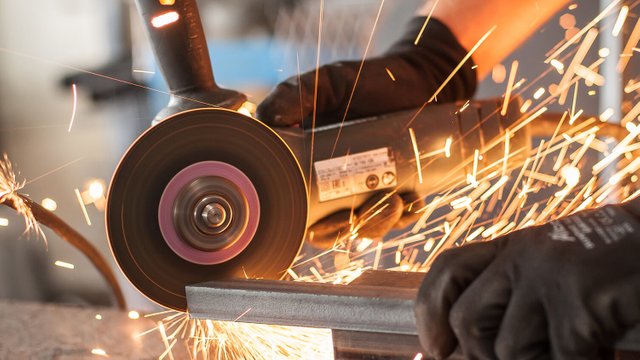A Brief Overview of Cutting Wheel

In many manufacturing and metal fabrication, cutting wheels have various usage.
Cutting wheels, or cut-off wheels, are narrow, precise structures that cut at 90-degree angles. There are different types of wheels available that are useful across various applications. Type 1 and type 27 are the common ones that are used for various industrial and hardware uses.
Type 1 cut-off wheel
Also referred to as type 41 cut-off wheel, is often the most efficient type of wheel because it can be used for almost all-purpose cutting. It does not have a depressed centre and thus offers an increased cutting surface with minimal interference with the work piece. The flat profile makes it perfect when you have to perform a 90-degree cut with a small amount of visibility for the operator. They are widely used in high-speed saws, grinders, die grinders, stationary saws, and chop saws.
Type 27 cutting wheel
This is also called type 42 cut-off wheel, comes with a depressed centre. Because of this centre, when the operator is holding it at a constrained angle, they get a clearer vision. Although it gives limited cutting ability to the wheel specially when working around profiles, corners, or extrusions, the depressed shape helps to hold the wheel securely than type 1.
Grain
The grains do the cutting in the wheels and the bond holds the grains together. The grains can be of different types such as -
• Zirconia alumina - ideal with structural steel, iron, and other metals because of its superior cutting; offers a fast cut with long life and can work under extreme pressure; used for rail cutting and other heavy-duty applications
• Ceramic alumina - perfect for steel, stainless steel, and other hard-to-cut metals; often paired with a high nickel alloy, Inconel, titanium, and armored steel; offers reduced heat discoloration.
• Aluminum oxide - most common for abrasive grains; offers fast initial cut-rate; can be consistent with steel and other metal.
• Silicon carbide - example of an extremely hard grain that is needed for very sharp and fast cuts; but is friable
Diameter and thickness
Choosing the correct size for cutting wheels will impact the finesse of the work. Measuring the right rate of revolutions per minute (RPMs) should match or exceed the RPM rating of the grinder. Generally, the wheel's RPM rating corresponds with its diameter and commonly ranges from 2 to 4 inches for die grinders. For the angle grinders, it can be 4 to 9 inches and 12 to 20 inches for stationary saws, chop, or high-speed saws.
Depending on the precision and accuracy of the wheel, the thickness can e determined. A thinner wheel performs better when you need a precise cut. It gives more accuracy, faster cut with less heat generation. Also, there is a lesser waste of the parent material in these cuts. But, these cut-off wheels do not stay for as long as the thicker ones do. They are widely used in cutting thin sheet metal, profiles, tubes, and tiny cross-section rods.
Applications for industrial cutting wheels
• general metal fabrication
• metal pipe fabrication
• shipbuilding
• welding preparation
• railways
• construction
Tips for using cutting wheels
RPM rating, size, and material are important deciding factors for selecting the right wheel but there are other points to keep in mind such as -
• only an appropriate amount of pressure should be applied - not too high, not too low
• the grinder should have the highest torque or amperage
• don't lean too much of the wheel which can cause side loading
• keep the wheel in a clean, dry environment